Boston Teen Author Festival 2018 Recap, Part 2: “Unlikeable” Female Characters and World-Building
- Brittany J. Vincent
- Sep 28, 2018
- 5 min read
In Part One of my Boston Teen Author Festival recap, I featured highlights from the first two author panels I attended. The panelists discussed the challenges of writing a book series and power struggles in fantasy. This post will outline and wrap up the final two panels, focusing on “unlikeable” female characters and creative world-building.
Let’s dig in!
Session 3: “Sorry Not Sorry”
Are these female characters truly “unlikeable,” or are they just unapologetically ambitious? And why do we equate the two?
Moderator: Rachel Strolle
Panelists:
On the negative connotation of “unlikeability” and its association with female characters:
“Unlikeable” female characters are often messy, ambitious, and complex. These traits may conjure up feelings in readers; they may perceive the characters' actions as more realistic and relatable to their own views and behaviors.

Liking a character is overrated; antiheroes and flawed heroines seem to be more memorable and human.
When good characters make a choice, you usually know what it will be—because they will try to do the right thing. Unlikeable or shady characters make surprising and unexpected choices; they keep the readers guessing.
On whether the authors consider the unlikeability of their characters and readers’ potential perceptions when writing:
Kiersten White noticed that she would add details in her And I Darken series to try and soften her female main character to be more likeable. Eventually White caught herself in those moments and stopped doing that—instead, she wanted the writing to be true to the character’s personality. It was a freeing experience.
Julie C. Dao worried that people would hate The Evil Queen in her book, Forest of a Thousand Lanterns. Male characters are frequently allowed to be antiheros whereas female characters (and women in general) are held to a different standard.
Claire Legrand said it’s important to write what suits the character. Some girls out there are angry, and they should be allowed to be angry. She wants to “normalize unlikeable characters.”
Lygia Day Peñaflor often hears people say “we need unlikeable girl characters.” But when confident and ambitious female characters are written, the reader’s response may be “I don’t like her.” Writers and readers need to look inward to figure out why they are having that reaction.
On crafting books with multiple points of view (POV) and the temptation to balance likeability:

Multiple POVs can show how a character is perceived.
Multiple POVS not only give the readers a breather from unlikeable characters but also add a multitude of complexity. A person isn’t always one thing.
It’s not always about showing likeability but different types of female strength.
On which story arc would the authors prefer—the hero becoming the villain, the villain becoming the hero, or a morally gray character:
Dao, Peñaflor, and White prefer a morally gray character.
Legrand prefers the hero becoming the villain.
On facing judgment from friends and family about the arcs in their books:
Sometimes family and friends can be concerned or impressed with how an author has the ability to write ruthless characters or plotlines.
White’s sister was curious about how she came up with the characters’ brutal military tactics (her series is historical fantasy, so they were used in real-life history). Also, her mother is a therapist and noted that White writes disordered thought processes "really well."
Legrand’s father reads her books, but he remained silent about Furyborn; she was okay with that. Her grandmother expressed concern after reading it, but Legrand explained to her that storytelling is a way to expel darkness from one’s self.
Session 4: “Talking Touchstones”
Even the most creative world-building needs to rest on a foundation of familiarity to ease readers into a new world. Sit back and hear how the pros do it!
Moderator: Ashley Hearn
Panelists:
On whether the authors start with character or the world when planning a story:
S. Jae-Jones is an “inside out writer.” She starts with character, and from there it grows when the character interacts with the world.
Holly Black starts with a “tonal feeling.” She tries to figure out what story goes with the feeling. Her planning starts with the magic system and then shifts to the character.
Makila Lucier starts with a character and knows nothing about the plot at first. With each draft, the plot is advanced.
Nova Ren Suma begins with the place.
On drawing a map of the story world or letting the story dictate the location:
Suma’s A Room Away From the Wolves is set in the real world but has a ghostly edge; she put her own map over a real one and plotted the points.
Lucier likes historical fiction and often uses real maps.
Black’s The Cruel Prince has a fairy-tale map, but she often doesn’t use a map.
Jae-Jones doesn’t get “too lost” in maps.
On what aspects of world-building inform a story:
Jae-Jones likes food and mythology (in particular, where myths come from).
Black finds it interesting how people will behave like people; even if there is a rule, not all characters or people in that world will follow it.
Lucier likes to focus on weird bits of history you don’t often hear about.
Suma is fascinated by superstitions and the origin of stories.
On how not to do world-building:
Some writers forget the place in their writing. It feels like characters are floating in space with nothing around them. Characters should be aware of their surroundings.
Remember characters have different mindsets in different times and places.

Writers should know the mechanics of their world: where are the food and resources coming from? Details should be disguised enough in the writing so that they’re not just a plot device.
Writers should have “internal consistency” about where things and the history originate.
Cultures can blend, which is more like cultural exchange rather than appropriation.
On missing details the authors encounter and must fix:
Jae-Jones jokingly answered “everything.” She once tried to teach herself quantum physics for a story.
Black adds “folklore-ish” aspects to create a feeling of creepiness in a world.
Lucier once found a Ford Model T driver’s manual to relate to her character who was driving that car. She also drove around a town as if she were her character taking that route to simulate the experience.
Suma needs to know where details are coming from and why, even if the reader doesn’t need to know.
On whether the authors would rather be the protagonist or the antagonist in their own books:
Suma chose the antagonist, because it has more freedom than the protagonist.
Lucier chose the protagonist because she knows what happens to the antagonist.
Black chose the protagonist but said she’d have a “better time until the end.”
On the stages of world-building—creating details all at once or over time:
Lucier based the island location of her story on her birthplace, Guam. She began with a shorter draft and then expanded on it with the world-building.
Black builds the world as she goes. Sometimes in the eleventh hour, she changes everything.
Jae-Jones calls her first draft the “exploratory draft”—where she’s thinking too hard about the details. Eventually the details form in subsequent drafts.
Suma sharpens and fine-tunes details over the course of drafts.
On whether writing sequels helps with world-building:
Sequels can be easier, because the world is in place. The author doesn’t have to start from scratch.
Sometimes an author will break an established rule in the world and then have to fix it.
On sympathizing with characters when writing them:
The writer should know the character’s voice.
Having empathy is a part of understanding the character.
On social justice fantasy books:
Black recommended Shadowshaper by Daniel José Older.
Most often, fantasy doesn’t tackle social justice issues in an obvious way. Readers can usually take away the messages they need from the book.
On cultures the authors would want to create/explore or a story they favor:
Lucier would like to write about the Great Fire of London or plagues.
Jae-Jones likes Gothic stories and horror.
Suma would like to explore the fairy tale The Snow Queen.
Black favors her book, White Cat.

Overall, it was an amazing experience listening to these diverse and accomplished authors explain their creative processes. I hope these highlights are helpful to all of you YA fans and writers out there. Feel free to also check out the BTAF website, and be sure to add these authors’ books to your to-be-read list!






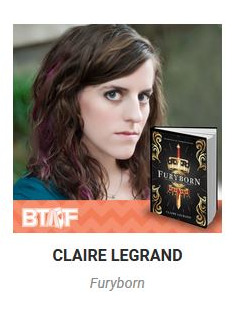

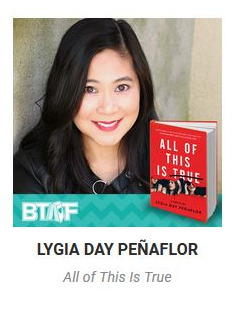

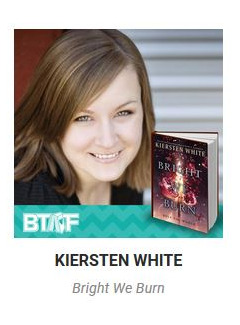


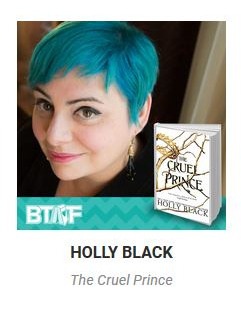

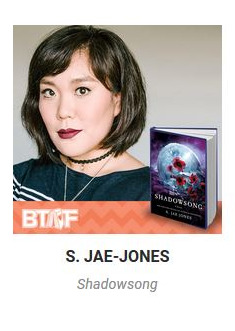



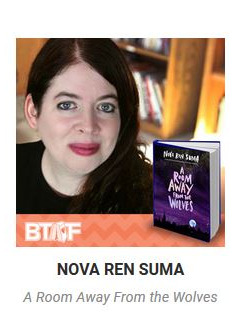
Comments